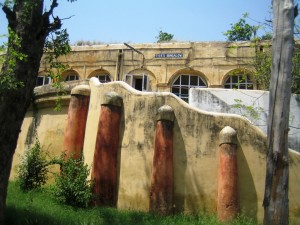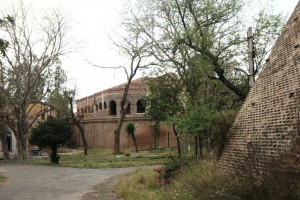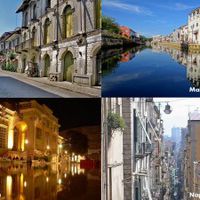India | Built Heritage Management: Gobindgarh Fort, Punjab
 Contributed by Gurmeet S. Rai
Contributed by Gurmeet S. RaiCultural heritage management is a fairly new concept in India, as is the idea of engaging communities in the management of the heritage ‘protected’ by the government. Built heritage designated as being of ‘national significance’ is under the management of government agencies, such as the Archaeological Survey of India (ASI), and those of ‘regional significance’ under the various state Departments of Archaeology. The government’s emphasis has long been on the ‘protection’ and ‘preservation’ of heritage buildings and sites. The legal provisions for the management of built heritage enable protection of the built heritage through ‘acquisition’, thus transferring ownership to the State, which must then provide boundary walls, cordon off the heritage structures from active use by the public, and intervene to prevent material decay to the built fabric. What constitutes ‘unprotected’ heritage is not defined and the absence of any legal or financial provision for their conservation and management allows manmade and natural forces to work on them.
The national government has been pushed to prepare conservation or site management plans for world heritage sites, as stipulated in the Operational Guidelines of the UNESCO World Heritage Convention, 1972, to which India is a signatory. This obligation has prompted others to revisit the challenges of cultural heritage management in light of increasing visitation to cultural heritage sites, need for better site management practices and opportunities for revenue generation.
Gobindgarh Fort
With a loan from the Asian Development Bank for developing improved and inclusive cultural heritage management practices in Punjab, the state government is creating a framework for the sustainable conservation and revitalisation of Gobindgarh Fort, one of the most striking historical edifices in Amritsar, amongst other historical buildings in the state. In its material, construction, layout and the philosophy underlying its structures, the fort symbolises the martial spirit and military ideals of Punjab.
[caption id="attachment_20180" align="alignnone" width="560" caption="Gobindgarh Fort: Panoramic view of inner court zone of fort showing colonial bunglow on Sikh plinth"]
Gobindgarh Fort has historical, architectural and associational significance. It is directly connected with the military history of Amritsar and the larger territory of Punjab, and with Maharaja Ranjit Singh (a significant Sikh ruler of the early nineteenth century) who named Gobindgarh Fort after the tenth Sikh Guru, Guru Gobind Singh. The fort was envisaged to defend the sacred city of Amritsar and Sri Harimandir Sahib (the Golden Temple). The Maharaja’s social and religious pluralism was evident at the fort, which housed an administration and military comprising Hindus, Sikhs, Muslims as well as Europeans. Under the leadership of the Maharaja, his army defined and defended the frontiers of Punjab.
The fort is an outstanding example of military architecture and engineering. Its design was adapted from the French fort building tradition with multiple layers of fortification, including landscape features such as the moat and ravelins. The fort was home to the state treasury and a foundry, and contained a complex water system. Changes were made to the historic fabric of the fort by the British, who occupied it following the Anglo-Sikh Wars in 1849, and later by the Indian Army, who controlled it from the time of Independence until 2006. The landscape of the fort, both within and outside, is significant for its archaeology, ecology, and as a repository of various cultural and historical events. The fort is also associated with the story of the Freedom Struggle and the Partition of India.
Occupation of the fort by the British and by the Indian army after Independence completely severed the associational and physical links of the fort with the city and its people. As a result, the public has forgotten that the fort exists. The Gobindgarh fort complex, besides being a heritage site of immense value also offers the residents of Amritsar a vital open recreational space and an opportunity to interact with nature in an otherwise densely built-up urban environment.
Conservation and Revitalisation Project
The Gobindgarh Fort Reuse Plan recognises the importance of protecting and conserving the values and significance of the site while transforming it into an invaluable public space through Public-Private Partnership (PPP). Without a cultural heritage policy and provisions to give legal sanctity to the interventions and transactions that form part of the cultural heritage management plan, the challenge is to achieve its objectives with tools drawn from other sectors of public asset management. A set of performance indicators and maintenance standards have therefore been developed for all who would be engaged in further detailing and monitoring the implementation of the plan, and for the private sector or government organisations that will be responsible for managing and maintaining the complex.
[caption id="attachment_20184" align="alignnone" width="300" caption="Gobindgarh Fort: Plinth and bungalow before conservation"]
 [/caption]
[/caption]Achieving a socially and environmentally sustainable framework for the fort has been one of the primary objectives of the plan. The project plan builds on the historical significance of the fort as the last-defence bastion of the Golden Temple and the city of Amritsar. The possible future role of Gobindgarh Fort as an icon of peace, equality and freedom has been recognised, and a dedicated Centre of Peace, Reconciliation and the Arts at the fort has been proposed.
The revitalisation plan has also ensured that the site is accessible to the diverse community groups connected to the legacy of the fort. Museums, interpretation galleries and outdoor installations are proposed to facilitate an understanding and appreciation of the history and associational values of the fort. An interpretation and educational outreach plan has been prepared. Energy and water conservation as well as waste management have been taken into account.
[caption id="attachment_20185" align="alignnone" width="300" caption="Plinth and bungalow after conservation"]
 [/caption]
[/caption]The implementation of the conservation, reuse and management plans for the fort has been divided into three phases spanning five years. Work for most of phase I has been commissioned. One of the key objectives of this phase is to give people access to a substantial part of the fort to re-establish its severed links with the city and its people and restore it to public memory. The work includes conservation and adaptive reuse of many of the buildings within the fort complex through de-vegetation and removal of debris from the moat, creation of landscaped courts and improved access to the innermost enclosure of the fort complex, and redevelopment of four major open spaces.
A permanent management and maintenance structure has been proposed to achieve extensive private sector participation in the project for revenue generation and an administrative structure that supports the socio-cultural and indirect economic aspects of the project. Under the plan, the government would be required to authorise the proposed Gobindgarh Cultural Heritage Management Authority to identify private sector partners to take up different aspects of the reuse plan. These partners would be offered PPP concessions and the long-term right, co-terminus with the concession period, to use the physical properties of the fort and the lands abutting it.
One of the big lacunas in India is the absence of a cultural heritage policy or legal provisions to identify the roles and rights of local communities in the management of heritage sites. State-led management practices thus exclude communities from playing an active role. The government must evolve such a policy, provide a regulatory framework and long-term equity and debt, and enable capacity building in both the public and private sector.
Gurmeet S. Rai is a conservation architect based in New Delhi. She established Cultural Resource Conservation Initiative (CRCI), a conservation consultancy firm in 1996. The firm has undertaken a wide range of projects in cultural heritage conservation and management practice in India. These include architectural documentation, historical building conservation planning, projects related to cultural heritage tourism and management, and capacity building and training. Clients have included the Archaeological Survey of India, Ministry of Tourism, Government of India, state governments, private foundations, institutions, Asian Development Bank, and UNESCO. CRCI has received numerous awards and recognition from various organisations including UNESCO and the government of Punjab.
Similar content
posted on
22 Jul 2012
posted on
06 Sep 2010
posted on
13 Apr 2018
posted on
14 Jun 2012





